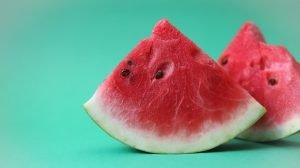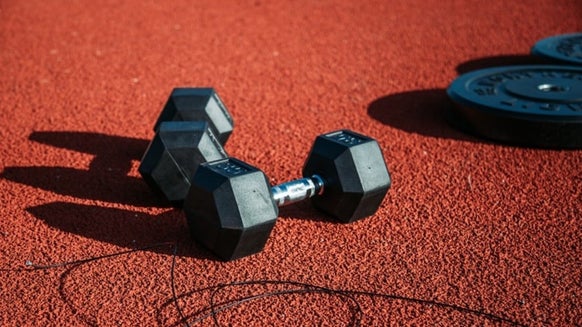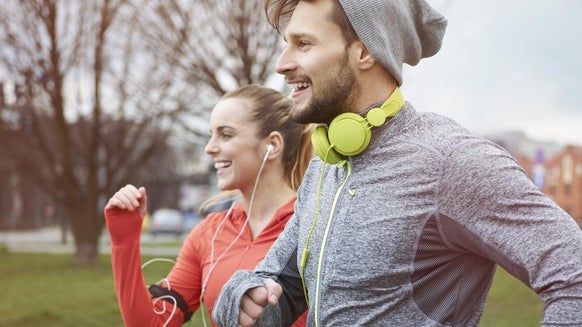
Citrulline malate is a popular pre-workout ingredient — you might know some bodybuilders or athletes who swear by it. It can be a useful addition to your routine, giving you a boost when you need it.
In this article we’ll explain exactly what citrulline malate is, what its benefits are, and the recommended dosage. You’ll learn about any potential side effects so you can decide if citrulline malate is something you want to try.
What is Citrulline Malate?
Citrulline
Citrulline, sometimes referred to as L-citrulline, is a non-essential amino acid. This means it can be produced in the body. Once formed, citrulline is involved in various metabolic pathways — most notably, the urea cycle — and is a precursor for the amino acid arginine.
Arginine has a role in the production of nitric oxide, which widens blood vessels to improve blood flow and oxygen delivery around the body.1
During aerobic exercise, skeletal muscle requires oxygen for energy production, therefore producing more nitric oxide gets more to working muscles, and leads to higher aerobic capacity, meaning you can push yourself to higher intensities.2
Now, you may be thinking: “why not just supplement with arginine or nitric oxide?”. The answer is citrulline has a longer half-life, meaning it circulates for longer once in our system, and is more effective at increasing levels of arginine than arginine supplements themselves.3
Think of citrulline supplementation as a stepping stone to boosting your body’s nitric oxide production.
- Watermelon
- Cucumbers
- Pumpkin
- Squash
- Nuts
- Chickpeas
- Onions
- Liver
- Salmon
- Beef
Malate
Malate is an essential intermediate of the tricarboxylic acid cycle (TCA), which generates two-thirds of the body’s energy by utilising fats and carbohydrates consumed through the diet. In the TCA cycle, malate is stripped of its hydrogen atoms, which in the process generates NADH2. This co-enzyme can then go on to produce adenosine triphosphate (ATP), which is the energy needed for muscle contraction.5
Fundamentally, making sure your body has enough malate will keep the TCA cycle working smoothly and ensure your muscles have enough usable energy to keep you moving.
Citrulline Malate Benefits
It’s all well and good understanding the nitty gritty about what goes on in our cells, but the question is: does citrulline malate really work and will it work for me? Luckily, research has some answers for us.
Citrulline malate can delay muscle fatigue
During one cross-over study, resistance-trained men completed five sets of leg press, hack squat, and leg extension at 60% of one-rep max (the maximum weight you can lift for one repetition) until failure. Following the consumption of citrulline malate, the number of reps performed was significantly higher across all exercises compared to the placebo group.6
Being able to perform more reps equates to more time under tension (TUT), which leads to superior muscle building.
Similar effects have been observed in women, with citrulline malate supplementation leading to number of reps completed of various upper and lower-body resistance exercises, compared to the placebo. On top of this, the women in the study reported lower ratings of perceived exertion after consuming citrulline malate.7
Imagine exercising for longer and feeling less tired.
If dumbbells aren’t your thing, citrulline malate can also improve calisthenic exercise performance, such as chin-ups and pull-ups, as well as boost explosive power during a cycling Wingate performance test.8,9
Improves oxygen delivery to muscles
Not only does citrulline malate have benefits for power-related exercise, it has also shown benefits in aerobic exercise.10
A research group tested this using a high-intensity cycling protocol after participants had consumed either citrulline malate or placebo for the previous seven days. In the case of this study, citrulline malate increased the distance covered in a given time, improved capacity for oxidative metabolism, and lowered arterial blood pressure.11
So if your goal is to improve endurance performance, a citrulline malate supplement might be worth a try.
Citrulline Malate Dosage & Side Effects
Take Home Message
FAQs
What is citrulline malate?
Citrulline malate is an amino acid which is involved in the production of Nitric Oxide, which improves blood flow.
How much citrulline malate should I take before a workout?
Studies have shown 6-8g to show optimal results, however dosages of 3g offer performance benefits
What are the benefits of citrulline malate?
Benefits of supplementing citrulline malate include delaying muscle fatigue and improving oxygen delivery to muscles.
Does citrulline malate have any side effects?
Citrulline malate does not have any known adverse side effects.

Claire is a Registered Dietitian through the Academy of Nutrition and Dietetics and a board-certified Health and Wellness Coach through the International Consortium for Health and Wellness Coaching. She has a Bachelor of Science in Biology and a Master’s degree in Clinical Dietetics and Nutrition from the University of Pittsburgh.
Talking and writing about food and fitness is at the heart of Claire’s ethos as she loves to use her experience to help others meet their health and wellness goals.
Claire is also a certified indoor cycling instructor and loves the mental and physical boost she gets from regular runs and yoga classes. When she’s not keeping fit herself, she’s cheering on her hometown’s sports teams in Pittsburgh, or cooking for her family in the kitchen.
Find out more about Claire’s experience here.
- Böger, R.H. (2008). L-Arginine therapy in cardiovascular pathologies: beneficial or dangerous? Current Opinion in Clinical Nutrition and Metabolic Care, 11(1), 55-61. doi: 10.1097/MCO.0b013e3282f2b0c3
- Dinenno, F.A. (2016). Skeletal muscle vasodilation during systemic hypoxia in humans. Journal of Applied Physiology, 120(2), 216-225. doi:10.1152/japplphysiol.00256.2015
- Botchlett, R., Lawler, J.M., & Wu, G. (2019). l-Arginine and l-Citrulline in Sports Nutrition and Health. Nutrition and Enhanced Sports Performance, chapter 55, 645-652. doi:10.1016/B978-0-12-813922-6.00055-2
- Nybo, L., Dalsgaard, M.K., Steensberg, A., et al. (2005). Cerebral ammonia uptake and accumulation during prolonged exercise in humans. The Journal of Physiology, 563(1), 285-290. doi:10.1113/jphysiol.2004.075838
- Akram, M. (2014). Citric Acid Cycle and Role of its Intermediates in Metabolism. Cell Biochemistry and Biophysics, 68(3), 475-478. doi:10.1007/s12013-013-9750-1
- Wax, B., Kavazis, A.N., Weldon, K., Sperlak, J. (2015). Effects of Supplemental Citrulline Malate Ingestion During Repeated Bouts of Lower-Body Exercise in Advanced Weightlifters. The Journal of Strength & Conditioning Research, 29(3), 786-792. doi: 10.1519/JSC.0000000000000670
- Glenn, J.M., Gray, M., Wethington, L.N. et al. (2017). Acute citrulline malate supplementation improves upper- and lower-body submaximal weightlifting exercise performance in resistance-trained females. European Journal of Nutrition, 56(2), 775-784. doi:10.1007/s00394-015-1124-6
- Wax, B., Kavazis, A.N. & Luckett, W. (2015). Effects of Supplemental Citrulline-Malate Ingestion on Blood Lactate, Cardiovascular Dynamics, and Resistance Exercise Performance in Trained Males. Journal of Dietary Supplements, 13(3), 269-282. doi:10.3109/19390211.2015.1008615
- Glenn, J.M., Gray, M., Jensen, A., Stone, M.S., & Vincenzo, J.L. (2016). Acute citrulline-malate supplementation improves maximal strength and anaerobic power in female, masters athletes tennis players. European Journal of Sport Science, 16(8), 1095-1103. doi:10.1080/17461391.2016.1158321
- Trexler, E.T., Keith, D.S., Schwartz, T.A., et al. (2019). Effects of Citrulline Malate and Beetroot Juice Supplementation on Blood Flow, Energy Metabolism, and Performance During Maximum Effort Leg Extension Exercise. The Journal of Strength & Conditioning Research, 33(9), 2321-2329. doi:10.1519/JSC.0000000000003286
- Bailey, S.J., Blackwell, J.R., Lord, T., et al. (2015). l-Citrulline supplementation improves O2 uptake kinetics and high-intensity exercise performance in humans. Journal of Applied Physiology, 119(4), 385-395. doi:10.1152/japplphysiol.00192.2014






